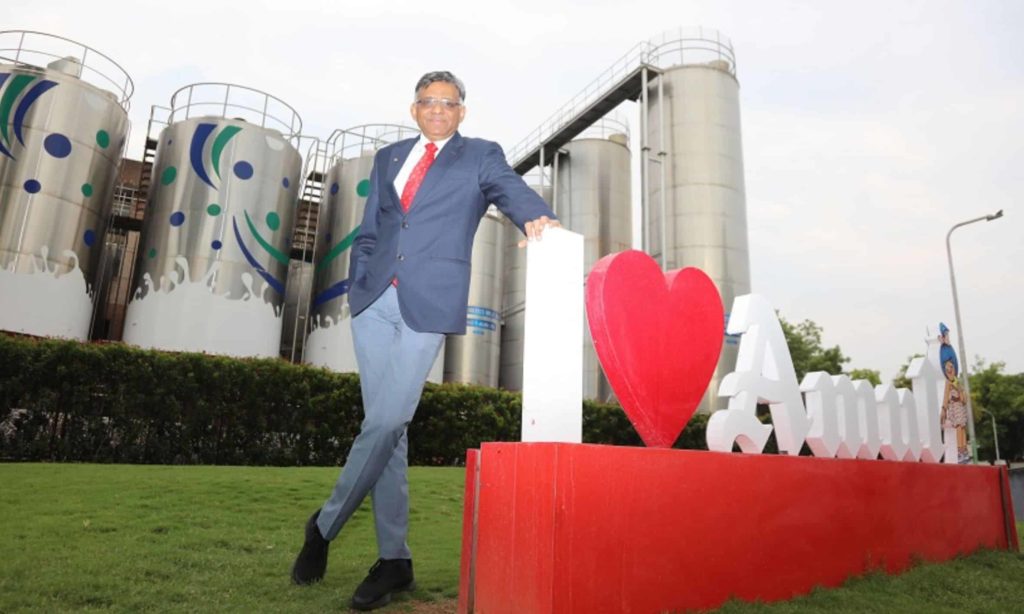
With consistent growth in its group turnover over the years through its dairy and value-added dairy products, Amul now seeks to go all out in India’s booming FMCG space as it believes it is the right inflexion point to tap into other non-dairy food categories. Above Amul’s big diversification bet is the success of the cooperative societies model, and the government aims to replicate its success in other cooperative societies in the country.
In an exclusive interview with BW Businessworld, Jayen Mehta, MD, Amul opens up on the enormous untapped potential in India’s dairy sector, newer growth avenues for Amul through non-dairy food categories and the tailwinds of growth for the cooperative societies by the government.
Excerpts:
With a group turnover of Rs 72,000 crore in FY23 and as Amul targets Rs 1 lakh crore by 2025, how do you envision sustaining this growth momentum?
The turnover growth we achieved in the last financial year is just the beginning. The way in which the Indian market is unfolding, we see an excellent opportunity in both the dairy and non-dairy food space.
Milk is the largest agricultural crop in India, and the value of milk output in the country is about Rs 9-10 lakh crore. It is important to look at the volume part where India’s total milk production is about 60 crore litres per day.
One-third of this milk is retained by the farmer in the village and the household itself, and this does not come into the market. What comes into the market is close to 12 to 14 crore litres per day, which is where the market is changing.
Amul currently handles close to three crore litres of milk a day, about 25 per cent of the total organised milk sector. But now, the way in which consumer behaviour is shifting, even if 5 per cent of Indians shift from loose and unpackaged to packaged and branded milk, you can add one more Amul every year in the Indian market.
Post-Covid, the Indian consumer started realising that health is vital. This behaviour is seen more in the food segment, where we sense an opportunity.
We saw some hike in milk prices recently, how were your margins affected? Are more price hikes on cards?
We did take price hikes last year. If you take the four-year period because two years prior to the previous year was the Covid year in which the producers were severely affected. More importantly, the input costs also increased, so we had to find a way to compensate the producers.
Inflation to the consumer becomes income to the producer because if you spend Rs 100 on Amul products, Rs 80-85 goes back to the producer. This is where the tightrope walking must be done. We cannot say we can have an unhappy customer because our business depends on the consumers, but we have to keep producers also interested in this business. Over a four-year period, we took only six increases in the price of our largest selling toned milk, so we are still way below inflation over a long period.
How do you plan to turn Amul into an FMCG behemoth. What is the multi-category plan in this segment considering the competition from the likes of ITC, Nestle, Britannia?
This is a great inflexion point for us to get into this space, and we are tapping several categories. The first is the organic segment. Today, consumers want to consume food which is free from chemicals, pesticides, etc. There is a need to democratise organics because, currently, consumers are paying a huge premium for this.
We are one of the promoters of the new multi-state cooperatives on organics. We have started working with the farmer groups interested in shifting to organics. We have set up labs to see that all our agricultural products are free from chemicals or pesticides.
We have already launched 8-10 products in this category, like Basmati Rice and different types of pulses and atta. We shall be soon launching organic sugar, tea and jaggery. Practically, every item you consume in your kitchen will be Amul branded, either organic or dairy.
We also got into oils under the Janmay brand; we have an oil-crushing plant in North Gujarat. So, we have a bouquet of products and a back-end farmer link. You will see Amul unfold on a big scale in this space very soon.
What about the beverages segment since this is one segment which will see intensified competition after Reliance’s acquisition of Campa Cola?
We have more than 120 stock keeping units (SKUs) in beverages, right from flavoured milk, coffees, carbonated drinks, protein nature products, Lassis and buttermilk. ‘Amul Kool’ is one of the biggest brands in the beverage space and market leader. In each of the categories, we have robust expansion plans. For milk, we have 98 dairy plants, packing and selling milk and fresh products ranging from a new range of protein and probiotics to single-species drinks such as camel and buffalo milk. It is a strong portfolio which is very focused.

Amul’s diversification beyond dairy products in the past failed to capture much of the market share? What have been the lessons from that experience?
The reason for our diversification, for example, in chocolates, was again the farmers’ interest. Multinational chocolate companies exploited the cocoa bean producers in South India. Amul entered this space, CAMPCO in South India was formed, and we started buying from them. The success is not just the sales of our products or market share.
Because of our intervention in this category, the cocoa bean producers got a reasonable price, and this is where the overall result must be seen. Today, we are the largest brand of dark chocolates in India. We expanded our capacity by five times in 2018, it runs at 100 per cent capacity, and we plan to double it.
In the beverages space, we launched ‘Seltzer’ for the first time in the country, dairy-based products, real fruit-based products and, more importantly, a cola without caffeine or phosphoric acid. These are the concepts which we bought in the country. We are not directly pitching ourselves to the Cokes and Pepsis because the products differ. The benefit we give to our consumers is a guilt-free indulgence, and they have been catching on very well.
In the frozen portfolio, the pizzas helped us understand that consumers want ready-to-eat stuff. We now have frozen parathas and French Fries. We set up a plant to manufacture French Fries, which sources potatoes from the farmers. The plant was commissioned six months back and is running at full capacity, and we are expanding its capacity by four times.
So, all diversifications come with a learning, but more importantly, the connection with the farmers is important to us.

The government identifies the cooperative segment as a tool of growth and development. How do you see the Amul experience getting replicated as new cooperative societies come up?
With the formation of a new ministry of dairying a couple of years back to the new ministry of cooperation, the era of cooperatives has returned to the country. There were times when the cooperatives were left to fight the competition not only from the national companies but thanks to liberalisation even from global companies. In her budget speech this year, the union finance minister discussed using cooperatives as a developmental tool.
I mentioned new multi-state cooperatives on organics. There are new multi-state cooperatives on export and seeds, which we are promoting. Amul, NDDB, IFFCO, KRIBHKO, NCDC, NAFED and National Consumer Forum are incubating and promoting these three new multi-state cooperatives, which will benefit many farmers across the country.
Second, out of seven lakh villages in India, there are two lakh villages where there are dairy cooperatives. The new ministry of cooperation has now given a new task of setting up two lakh dairy cooperatives in the balance five lakh villages. You can imagine more milk and farmers coming into the organised sector. The White Revolution 2.0 has just begun. Cooperatives will become a differentiating force for the betterment of our country and will make India a very strong economy in years to come.

Tell us about the sustainability aspects being adopted by Amul in the whole value chain?
In India, we have demonstrated that cow is not a problem but a solution. We have started working on what is called the circular economy. The cow’s dung is collected and converted into biogas; that biogas goes to light up stoves in your home. The slurry left behind after the production of this gas is a good fertiliser that goes into the field and supports the farmer to do organic farming.
So, you kill many birds with one stone. You import less fuel and save foreign exchange, import fewer fertilisers and care for the environment. You are supporting the production of food without chemicals and pesticides. This is what we are working on, and India will be a classic case to the world in which this circular economy will help all of us in a tremendous way.

















